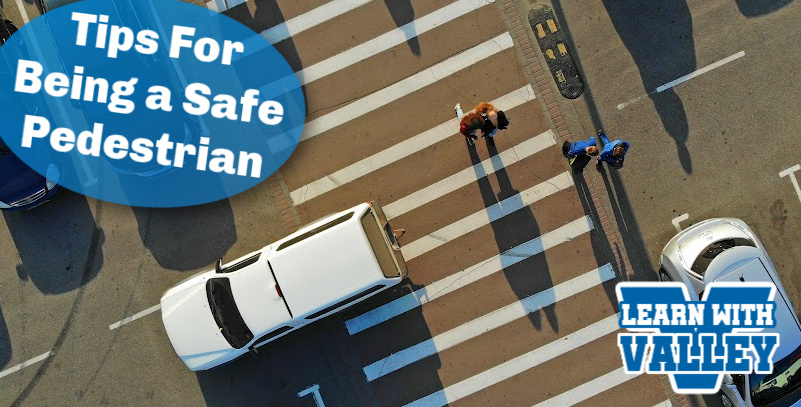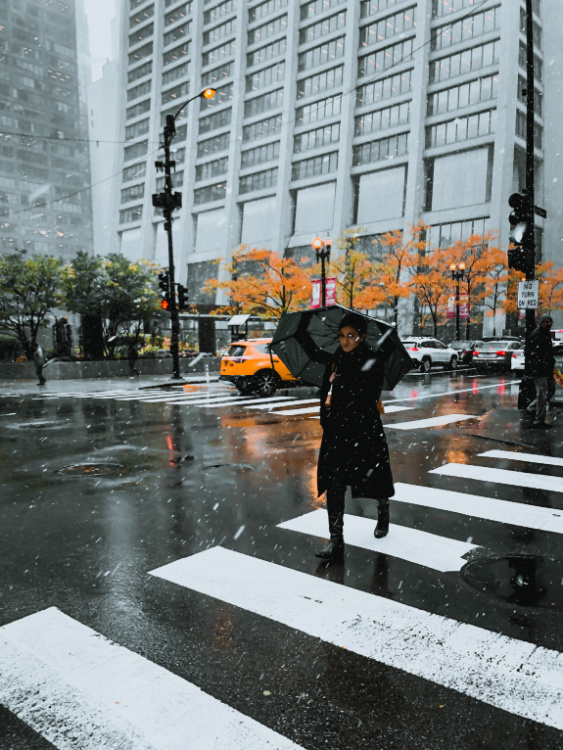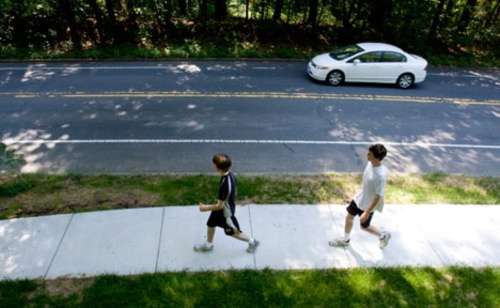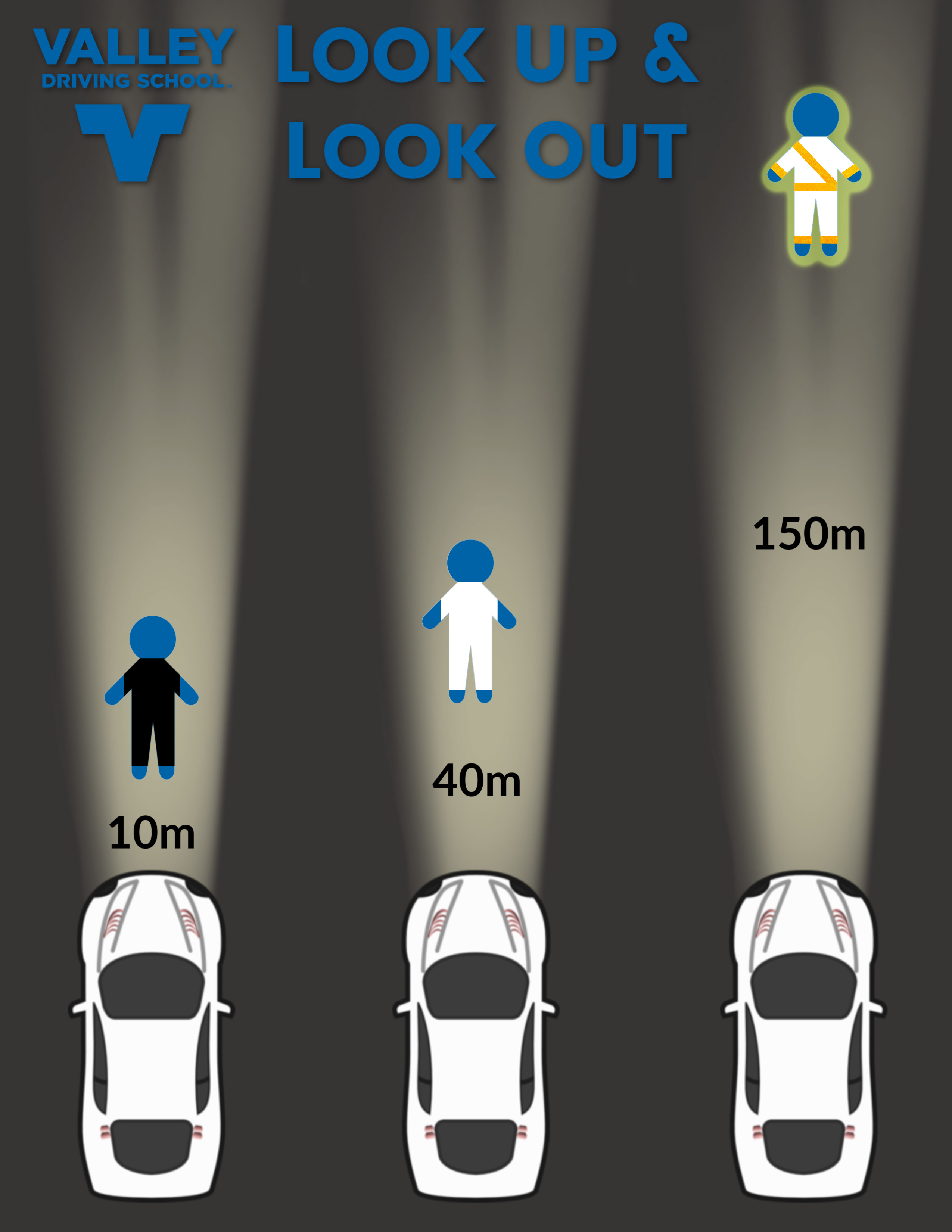Pedestrians are road users too, so we should incorporate their safety and well-being into everything we talk about when it comes to road safety. Pedestrians have an increased risk of harm, due to the lack of safety features surrounding them like drivers and vehicle passengers have. Road infrastructure is being made safer for pedestrians every year but, even in marked crosswalks and sidewalks, there are high risks to pedestrians that are close to any roadway.

While we stress to drivers how they can safely share the road with pedestrians and work to create a decreased risk to them, we also encourage pedestrians to take their own safety seriously and take precautions to ensure they make it to their destination safely.
Connect with drivers
We don’t mean going out for coffee! You can often tell what drivers are going to do based on their vehicle's position on the road or in their lane, as well as the placement and movement of their hands and heads. Watch for vehicles that have their wheels turned, even if they don’t have a turn signal activated, or if they are hugging one side of the lane or curb. This could indicate their intention to turn but they may have forgotten or accidentally turned off their turn signal. You should also be doing your best to make eye contact with drivers as you cross roadways, whether in a marked or unmarked crosswalk, to confirm that they have seen you and know that you’re present.
Resist the urge to jaywalk

Jaywalking can seem tempting, especially if the coast is clear, but this is an extremely dangerous and illegal practice! Vehicles can seemingly come out of nowhere and drivers are most likely not expecting pedestrians to be in the road where there is no crosswalk. The speed limits along most roads were not put in place to account for pedestrians crossing and most vehicles may not be able to slow and stop if they do not notice a pedestrian stepping onto the roadway. There may be some extra steps or time involved, but you should always make your way to the nearest crosswalk to move from one street to another. If not only for the safety aspect, jaywalking can lead to a ticket and fine.
Wait to cross when the flashing hand or countdown signal is present
If the crosswalk indicators have already turned to a flashing hand or “don’t walk” signal, or are well into the ticking countdown, your best bet is to wait until the lights have cycled back and allow you the full allowance of time to cross. While you may think there is enough time to get across, there may be some vehicles that are also trying to beat the light before it changes and this could turn into a space conflict between you and a vehicle. Depending on the location you’re waiting at you may be able to trigger the crosswalk signal going the other direction, and this will at least keep you walking if you want to get the steps in!
Be extra cautious when crossing at intersections

Even when you do have the right of way and a “walk” signal, you should still be mindful of your surroundings. This includes looking both ways before stepping onto the roadway, as well as watching for the driver's intentions through their hand and head movements, eye contact, and vehicle position. Drivers should be focused on potential obstacles and road users (including you!) but may miss something amongst the traffic, and what some consider to be intersection chaos. Be especially cautious and aware during poor and extreme weather conditions, when drivers will have even less visibility and vehicles may slide right into the middle of an intersection because of snow and ice, putting you at risk.
Use sidewalks when possible
Sidewalks have just one purpose - allowing for the safe travels of pedestrians! Use sidewalks or pedestrian areas whenever available. Some parents with strollers are tempted to avoid sidewalks due to the cracks and seams, and possibly making for a bumpy ride for small children but the minor discomfort is worth the safety that sidewalks provide from motorists. If you are walking in an underdeveloped area without sidewalks, do not walk directly on the road or obstruct traffic. Try to stay separated from the roadway, walk on the other side of the curb if there is one, and if you need to navigate away from the road to find another walking path.
Be engaged
Anytime you are a pedestrian, you should be aware of your surroundings from one second to the next. This means avoiding looking at your phone for anything longer than a brief glance and even though you may have headphones in, they should be turned low so you can still hear the sounds of the traffic around you. One way drivers will communicate is through sound, like their horn, so losing this means of communication because of music, an audiobook, or a podcast that is loud enough to drown out the sounds around you could prove dangerous.
Choose your clothing wisely!

When walking at night, be sure to wear brightly coloured reflective clothing. Dressing in dark attire can make you nearly impossible for drivers to spot, especially on unlit roads like highways or side streets. If you’re settled on black or dark clothing, add reflective elements to your clothing or choose accessories accordingly to increase visibility. If it is wet or icy outside, choose footwear that allows you to maintain grip to avoid any falls.
–
By employing these tips into your pedestrian experience, you too can help keep the roads safe for everyone. Remaining vigilant is key - road users, whether pedestrians or motorists, are a bit unpredictable and no one other than that road user knows what their next move is. As a pedestrian, it’s important to remember that vehicles you’re sharing the road with are more likely to cause damage to you than you are to them. Keep your eyes on the road, stay aware of your surroundings, and you’ll make it home at the end of the day!
